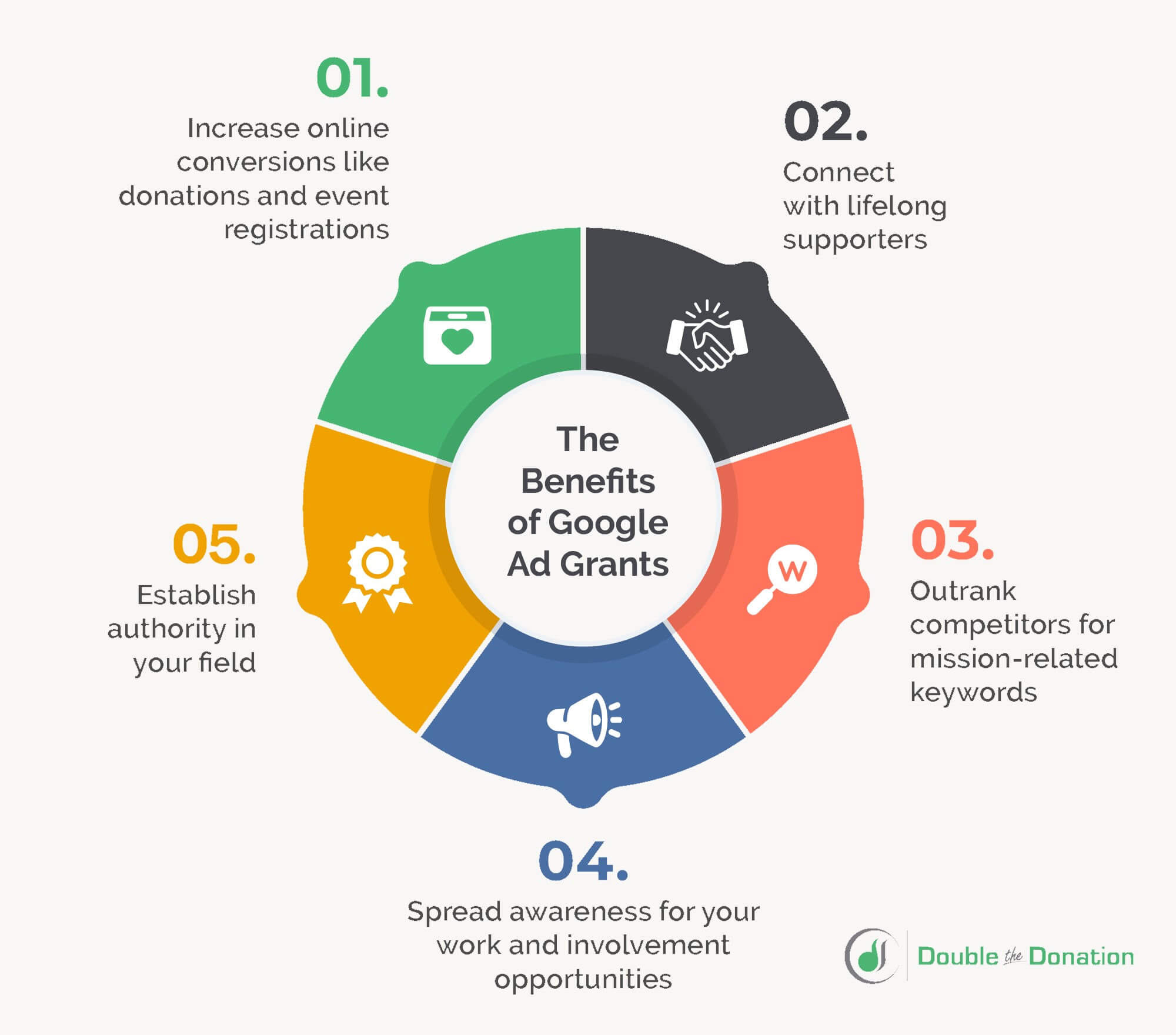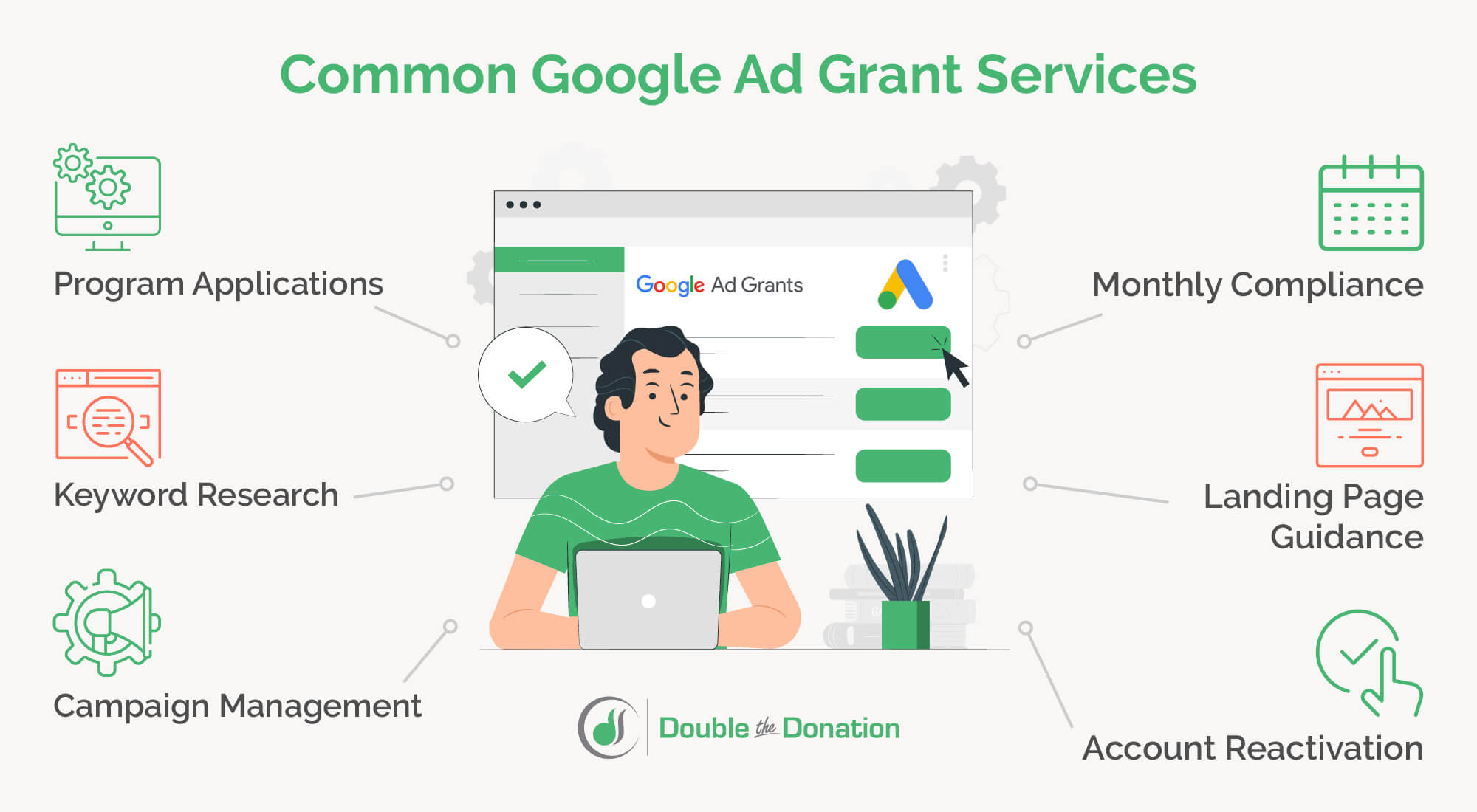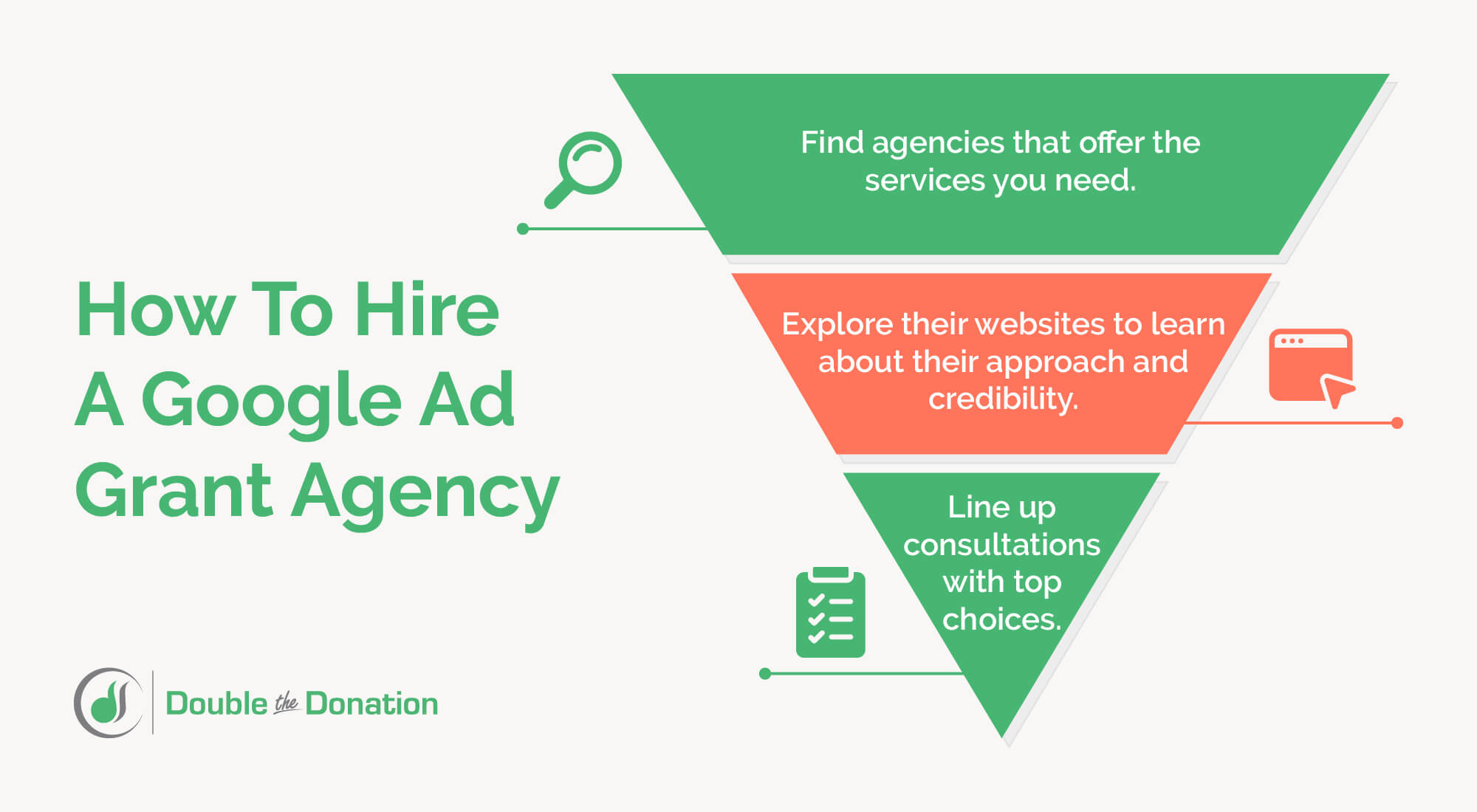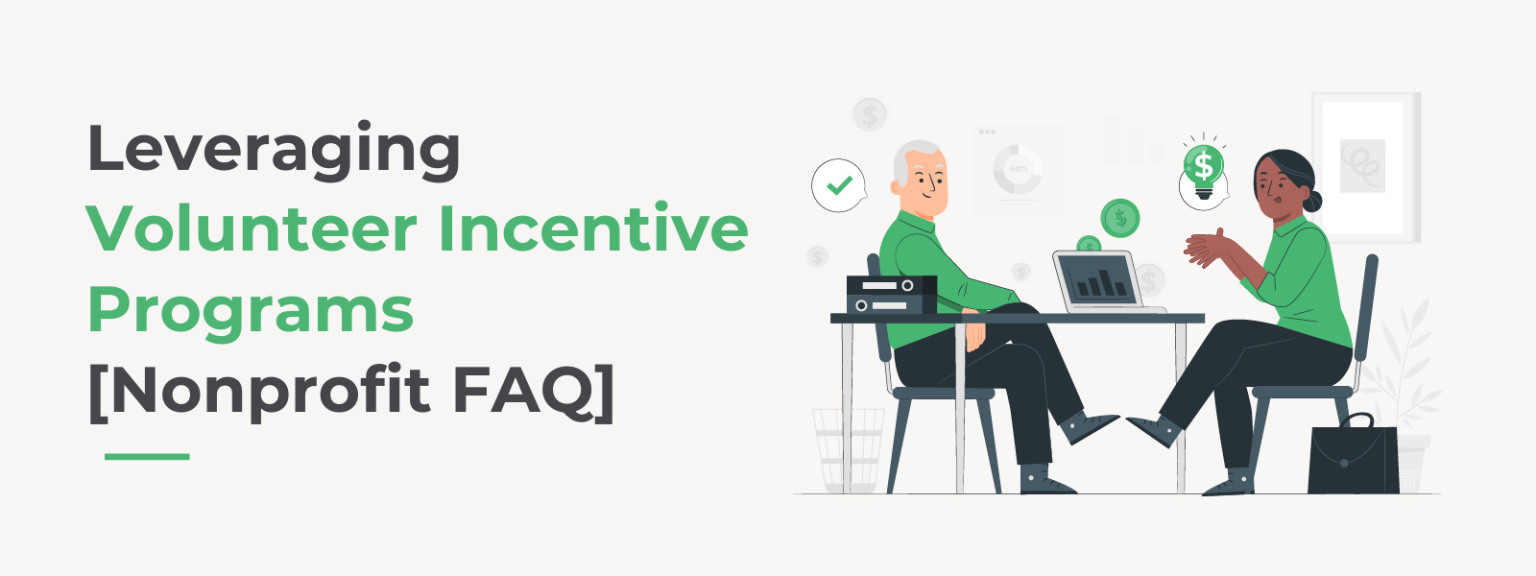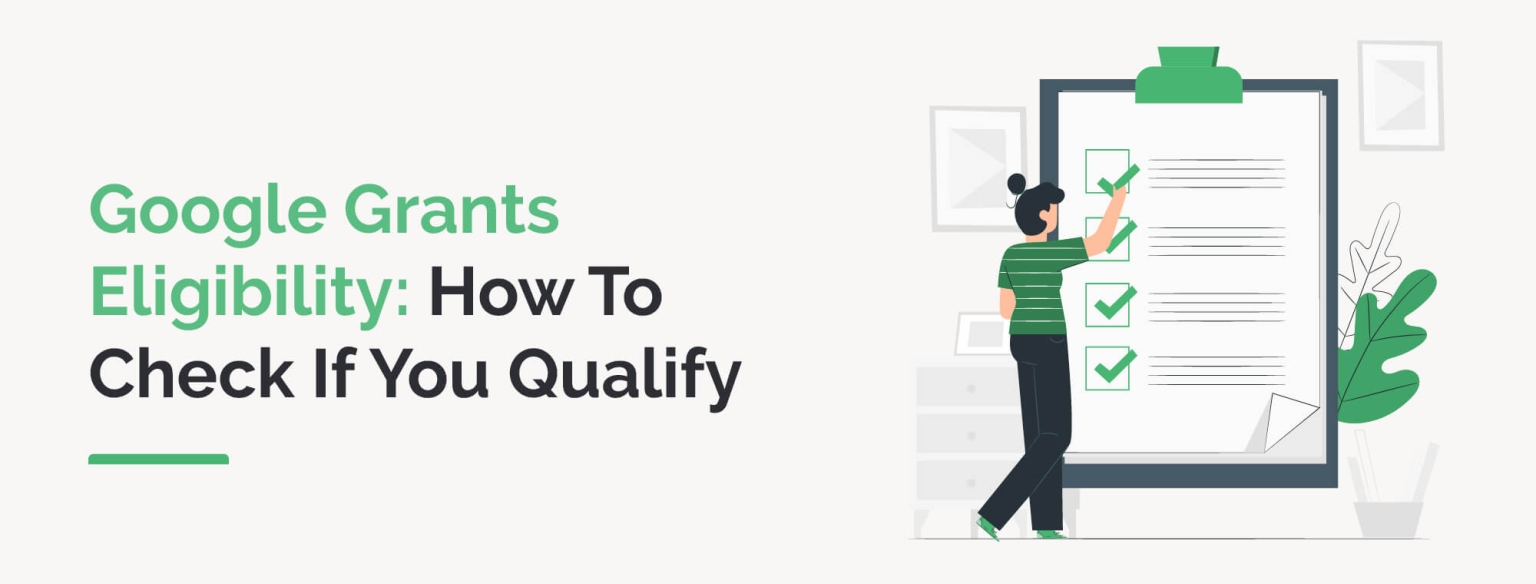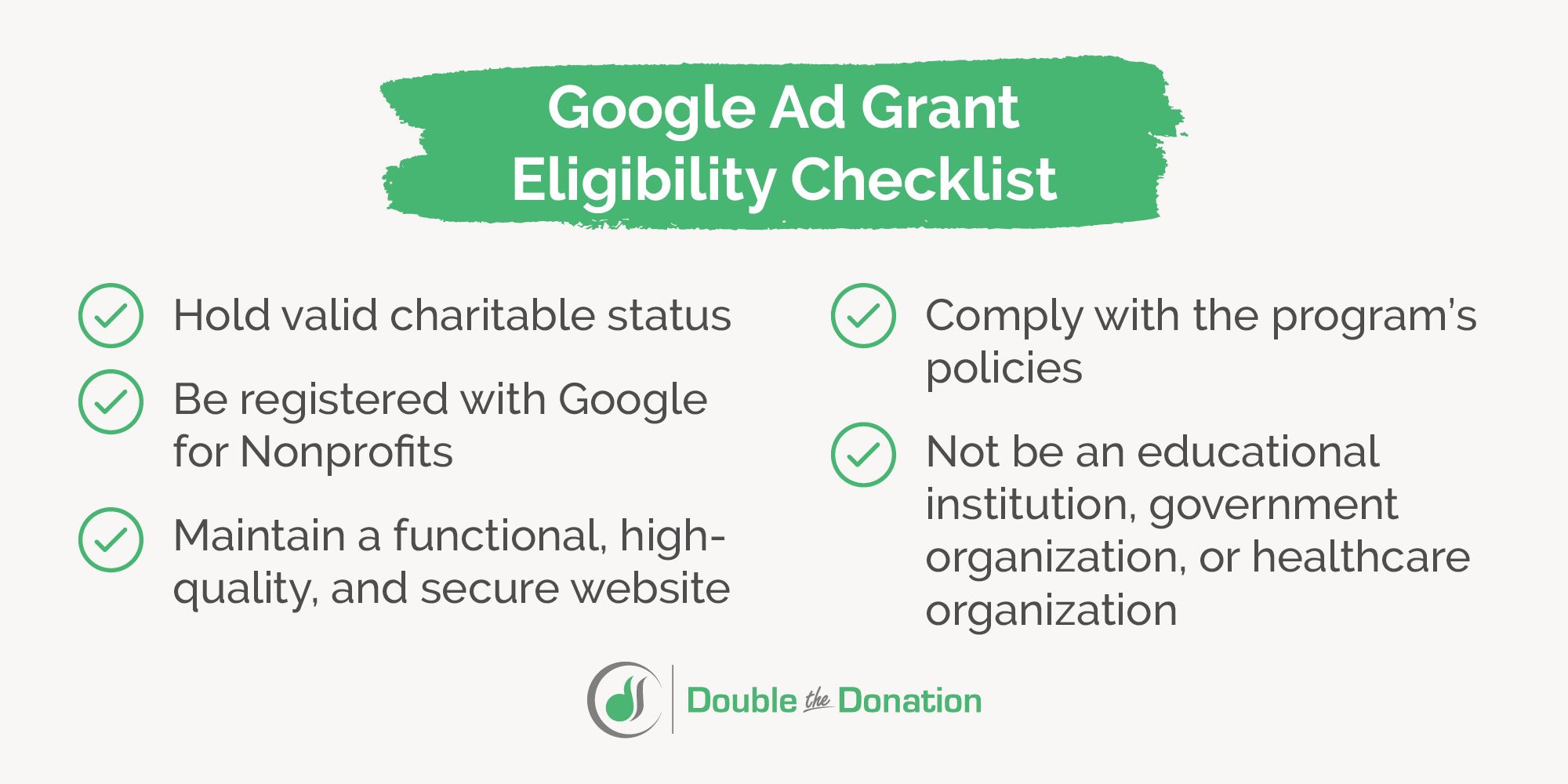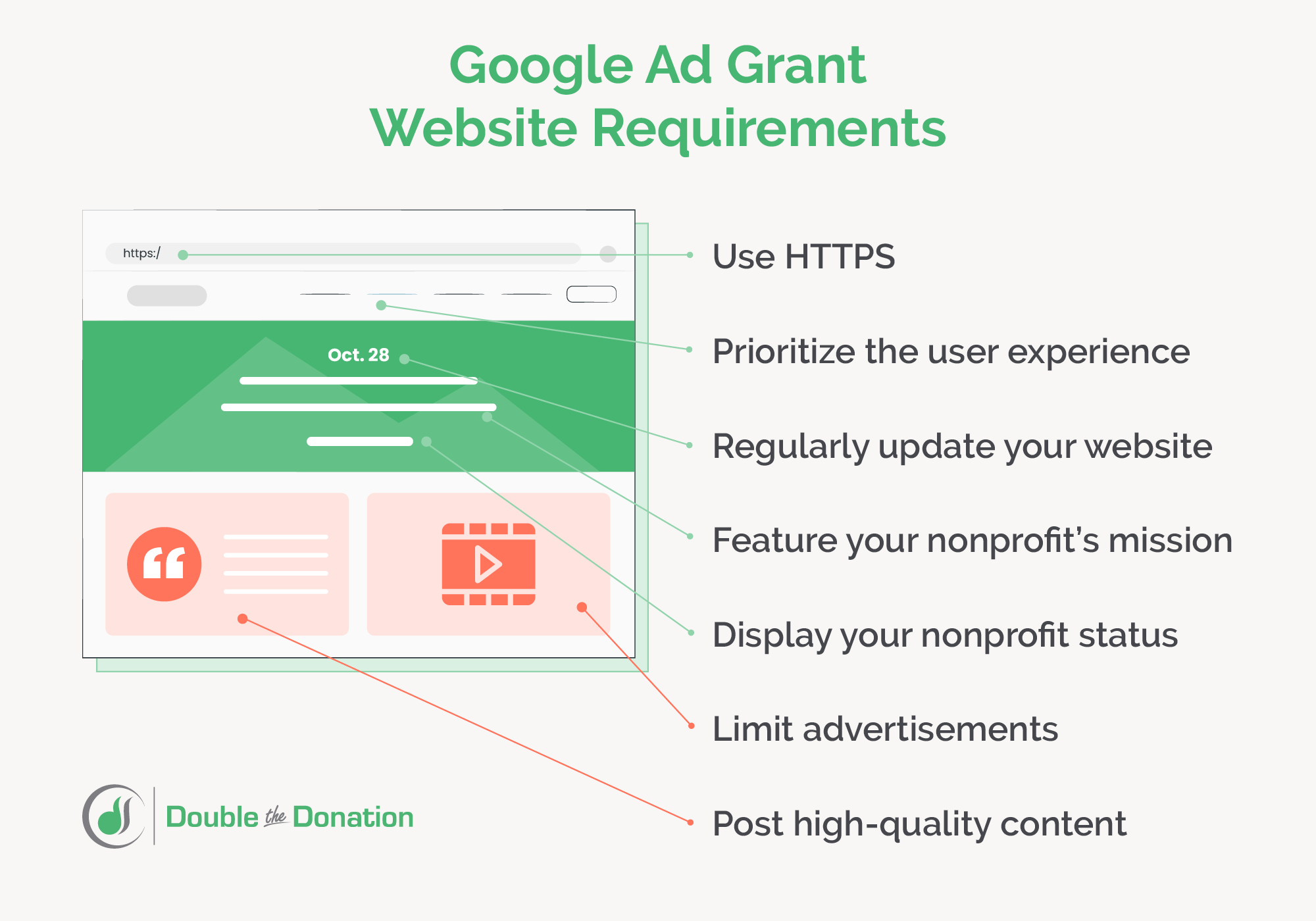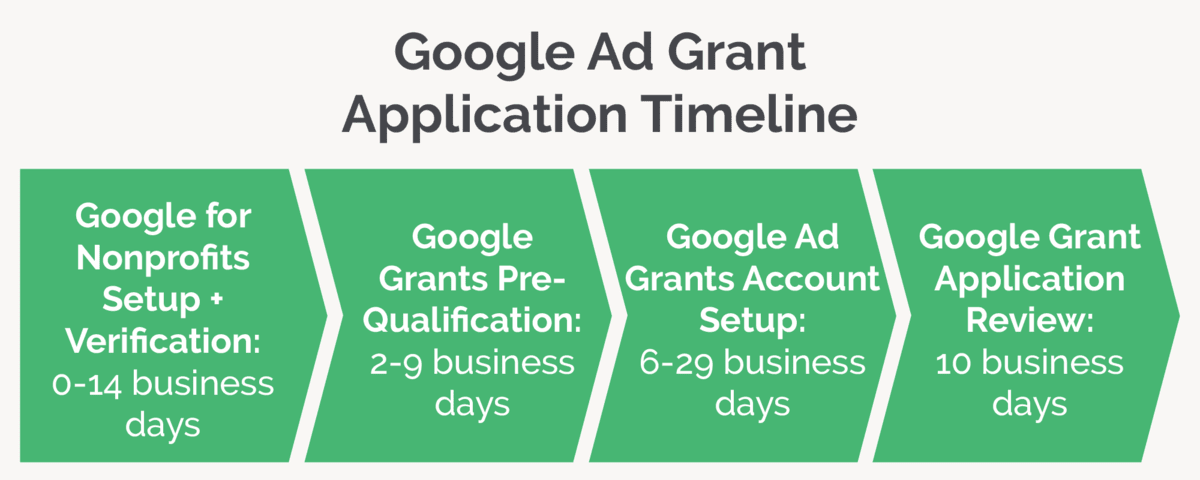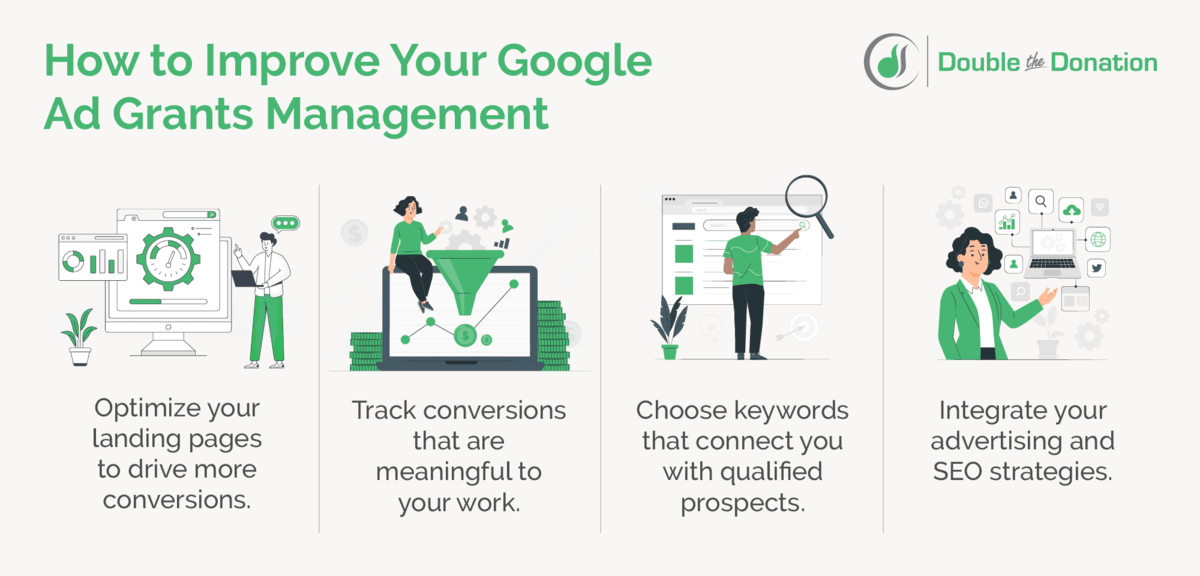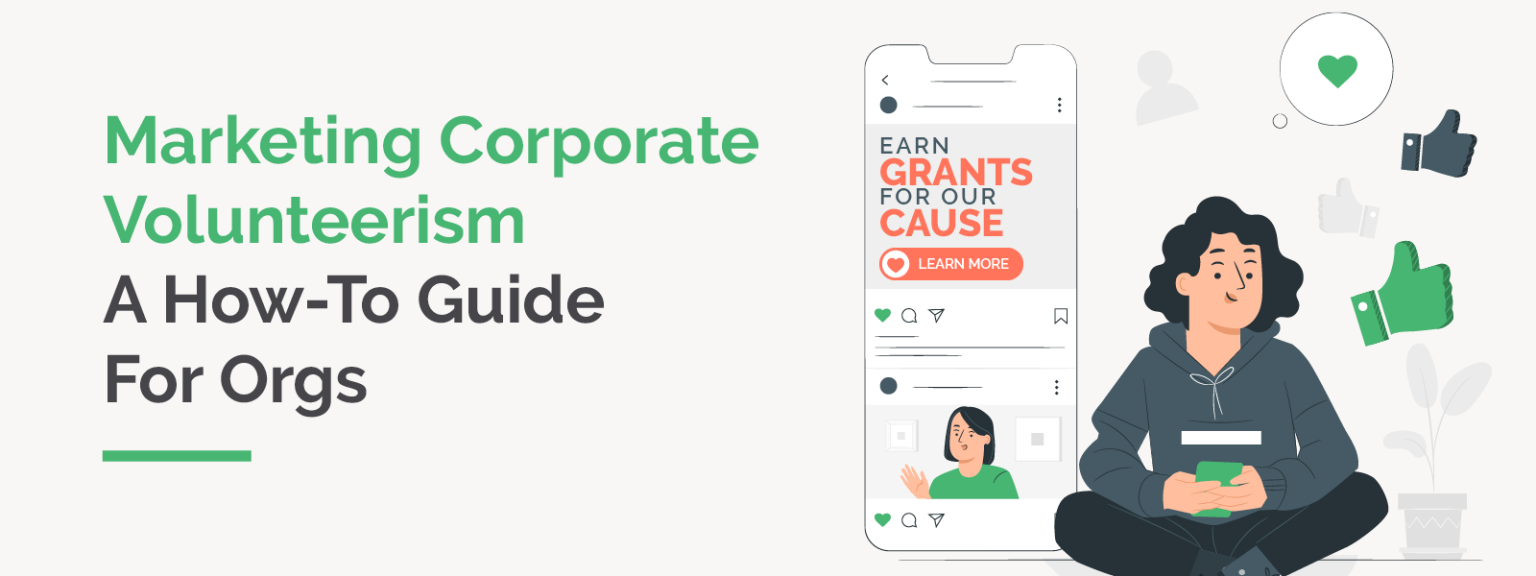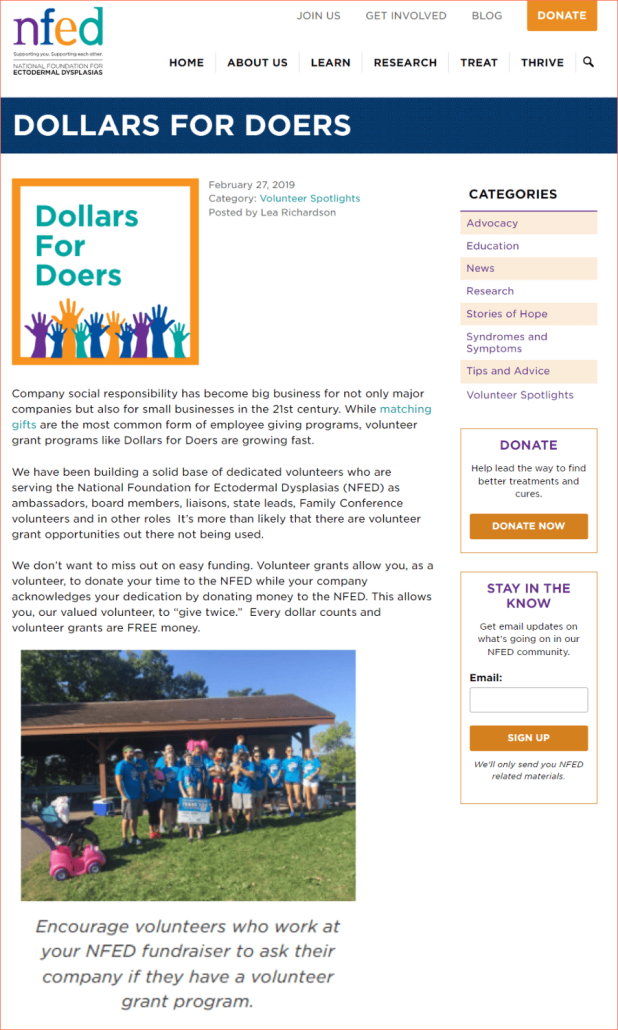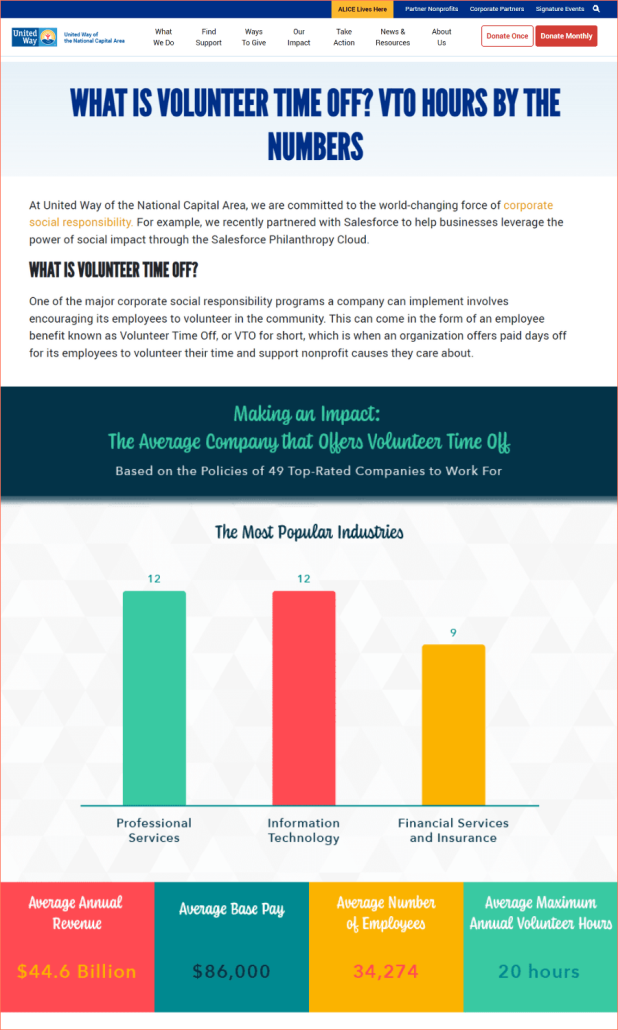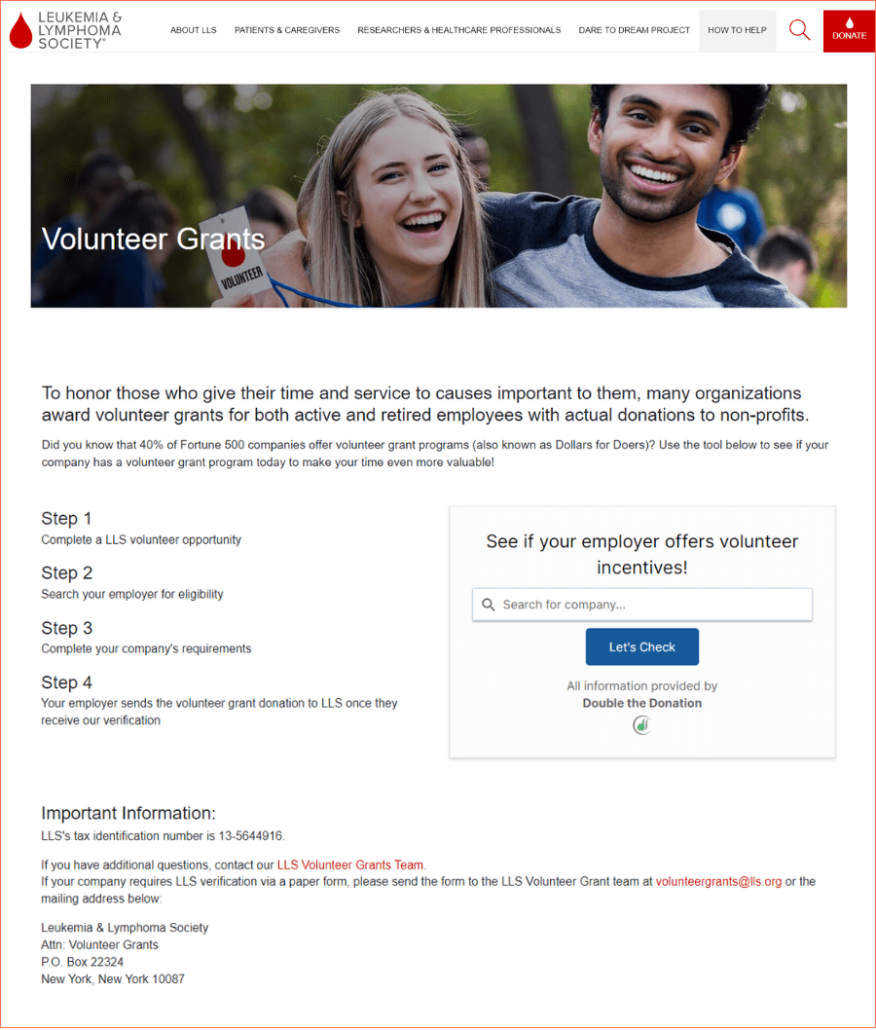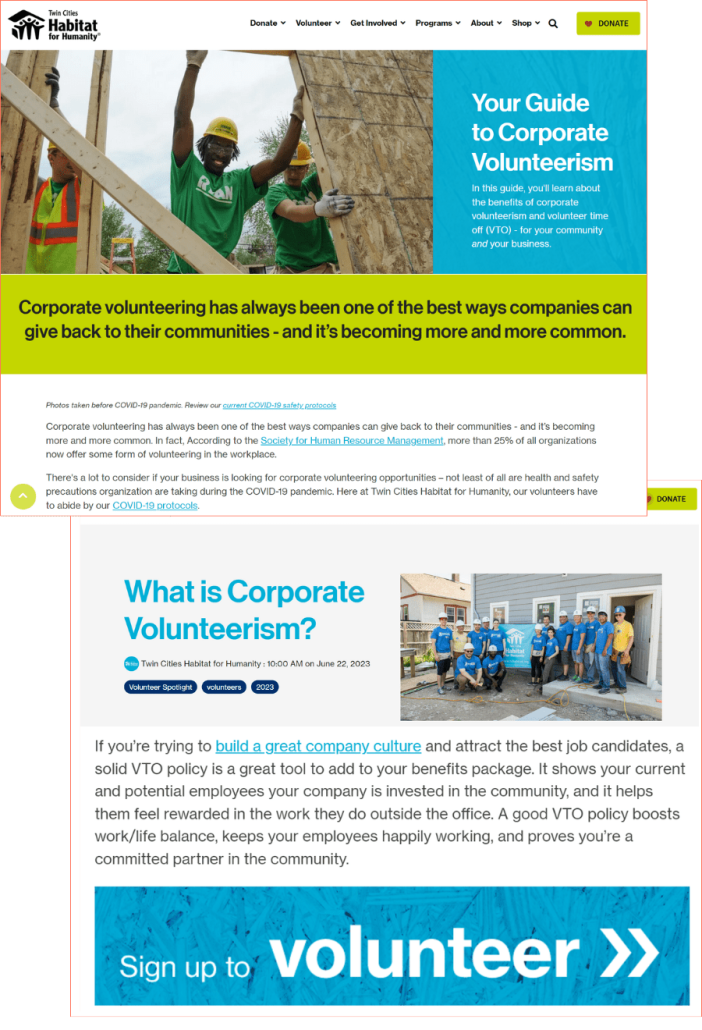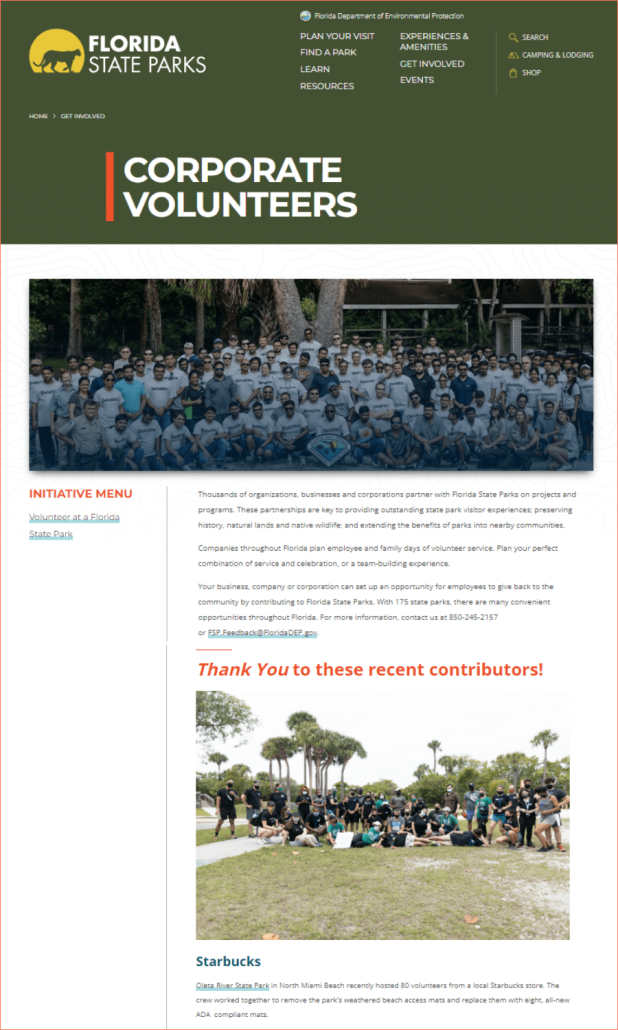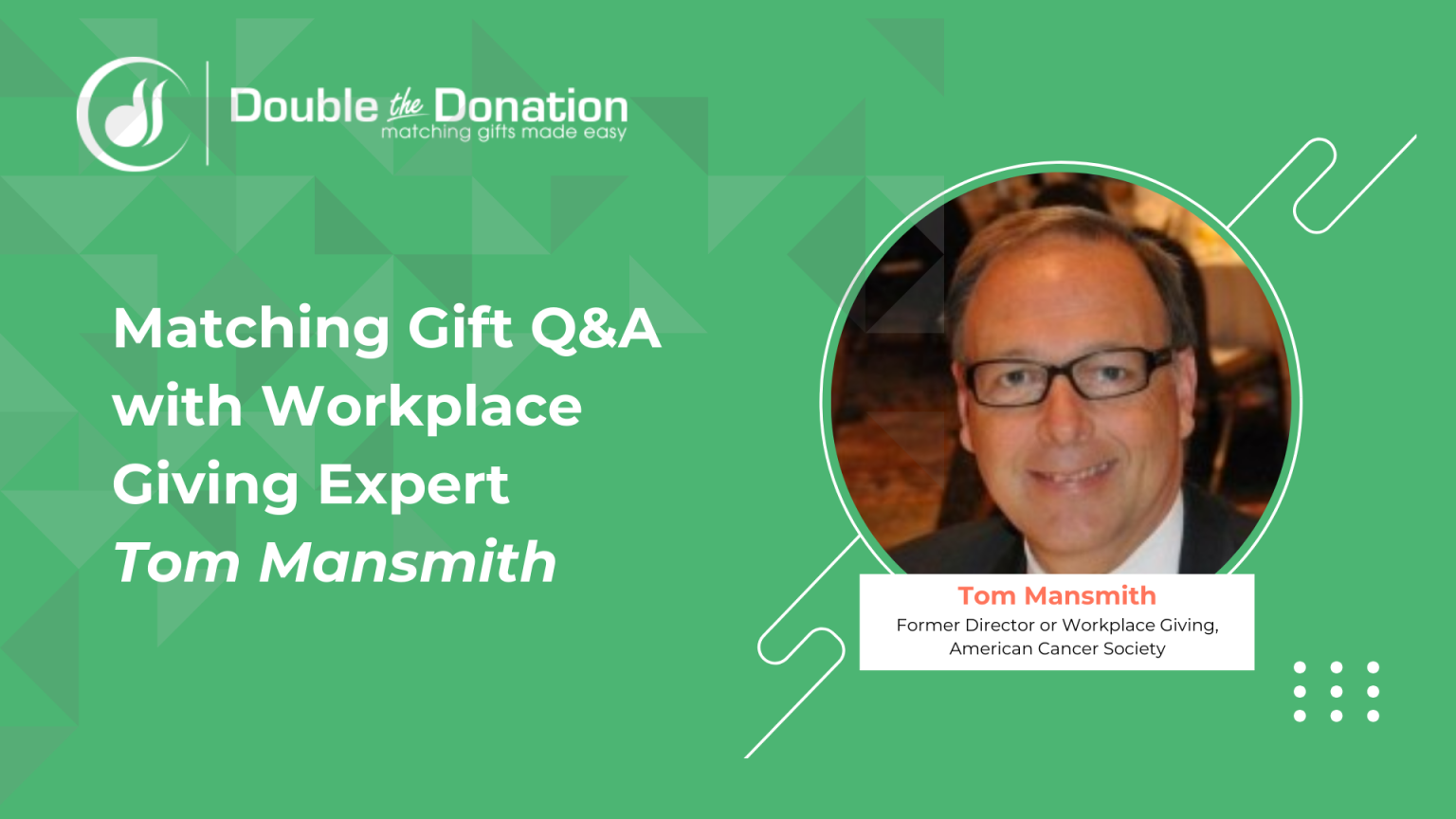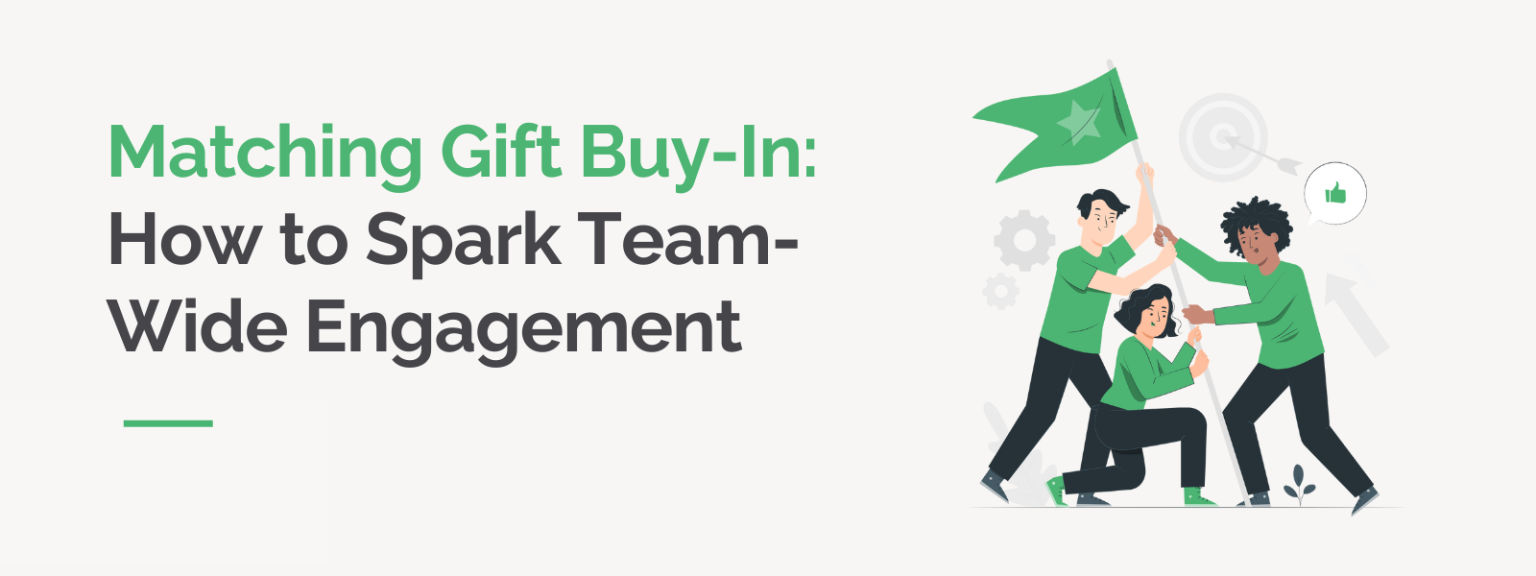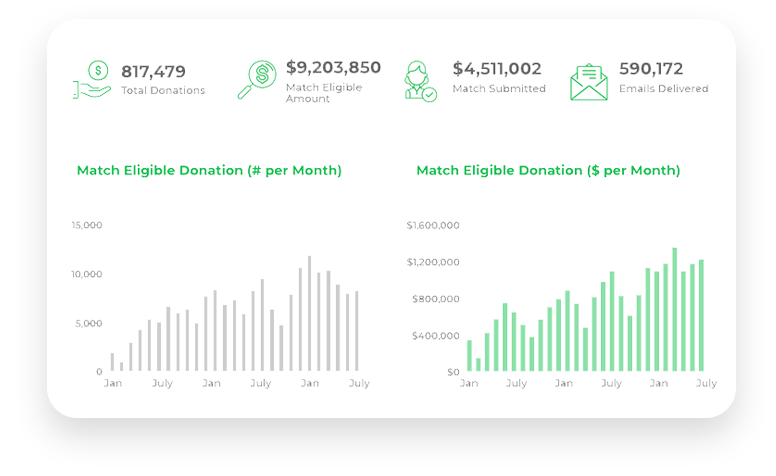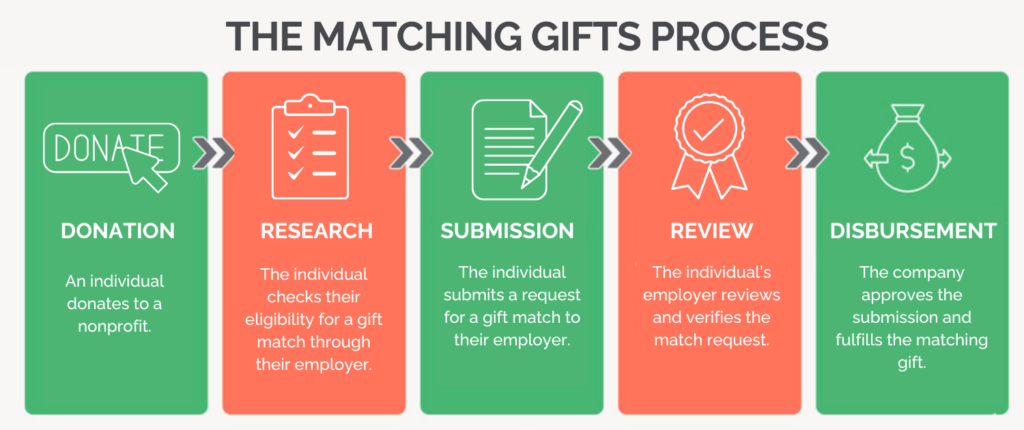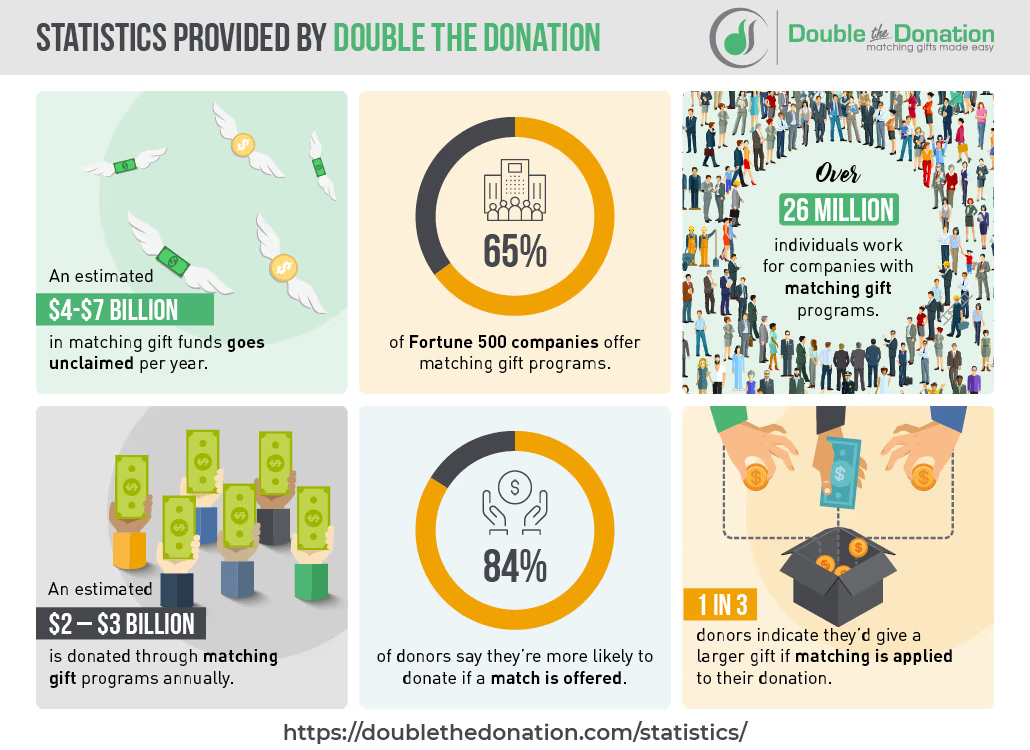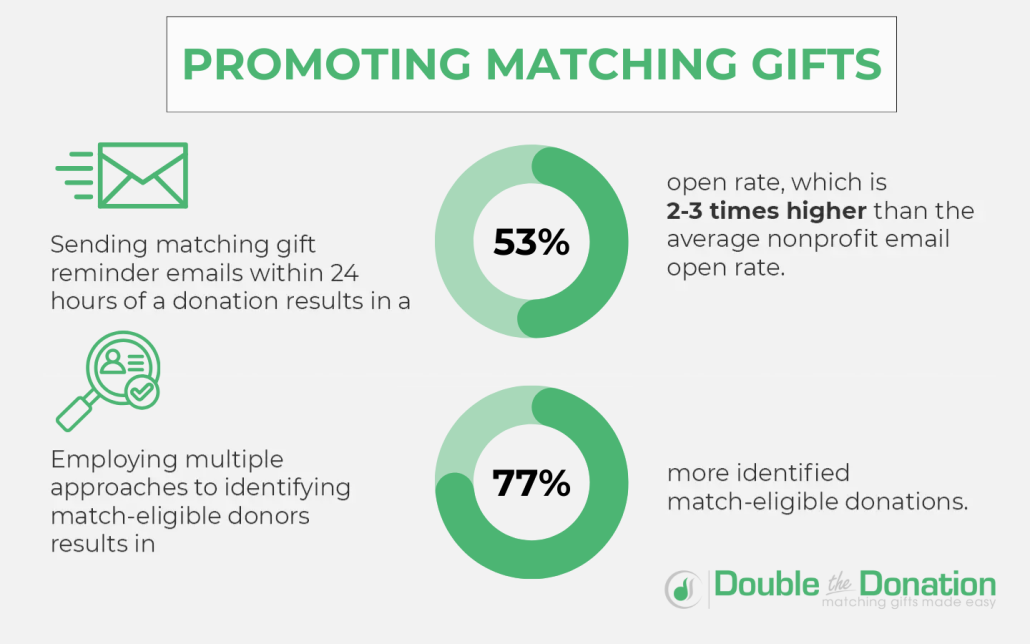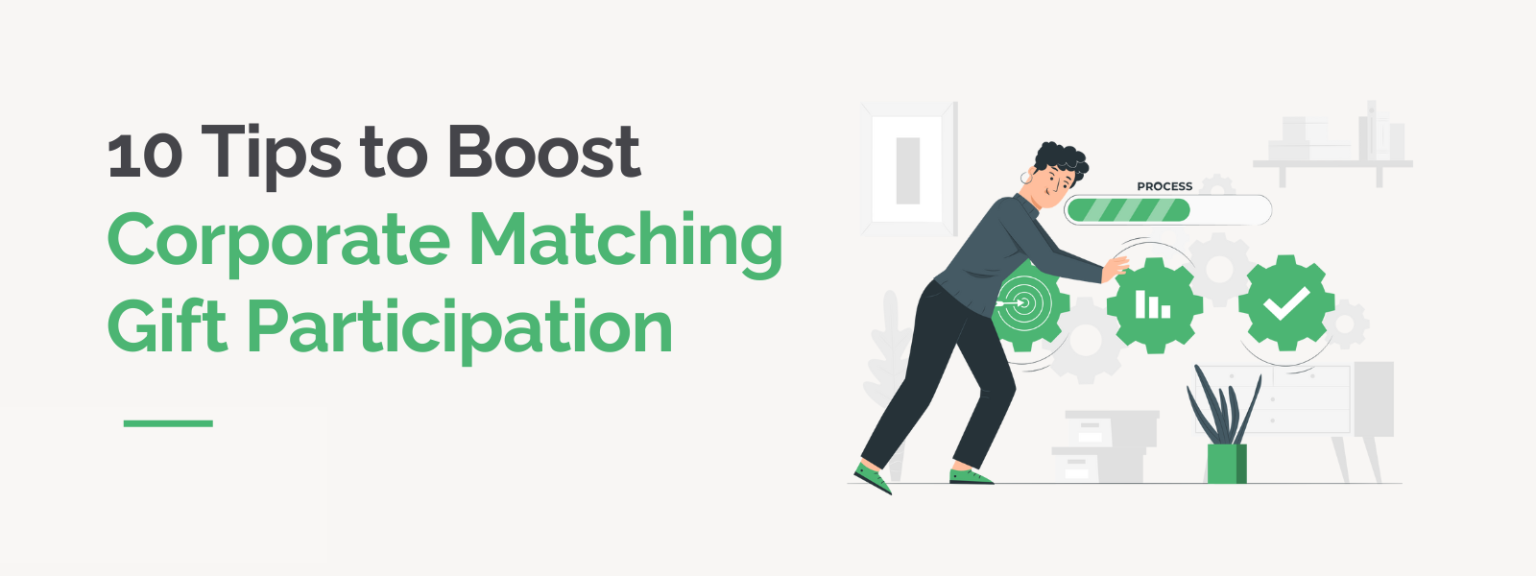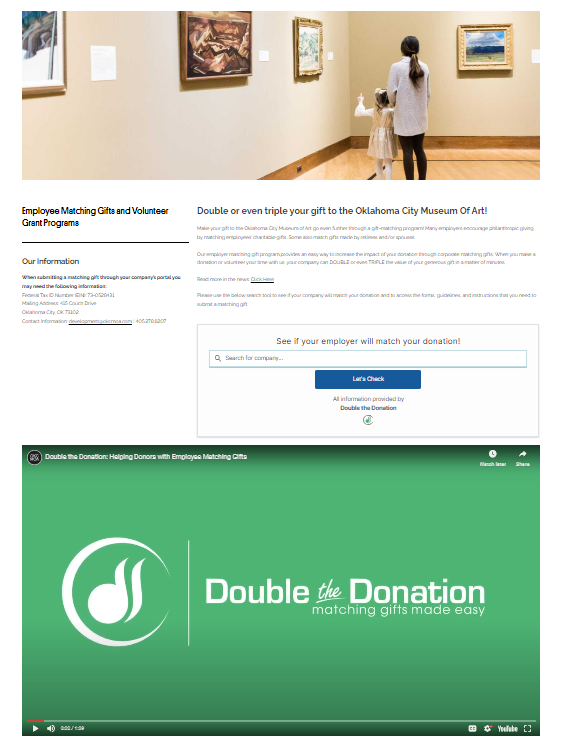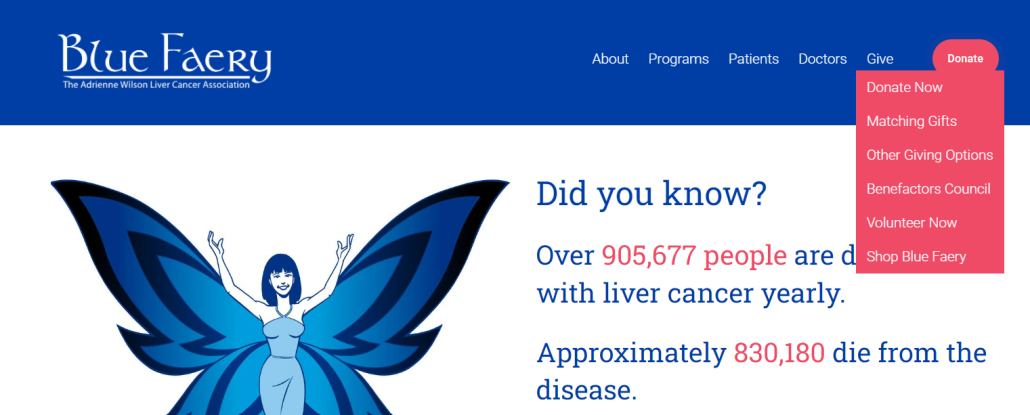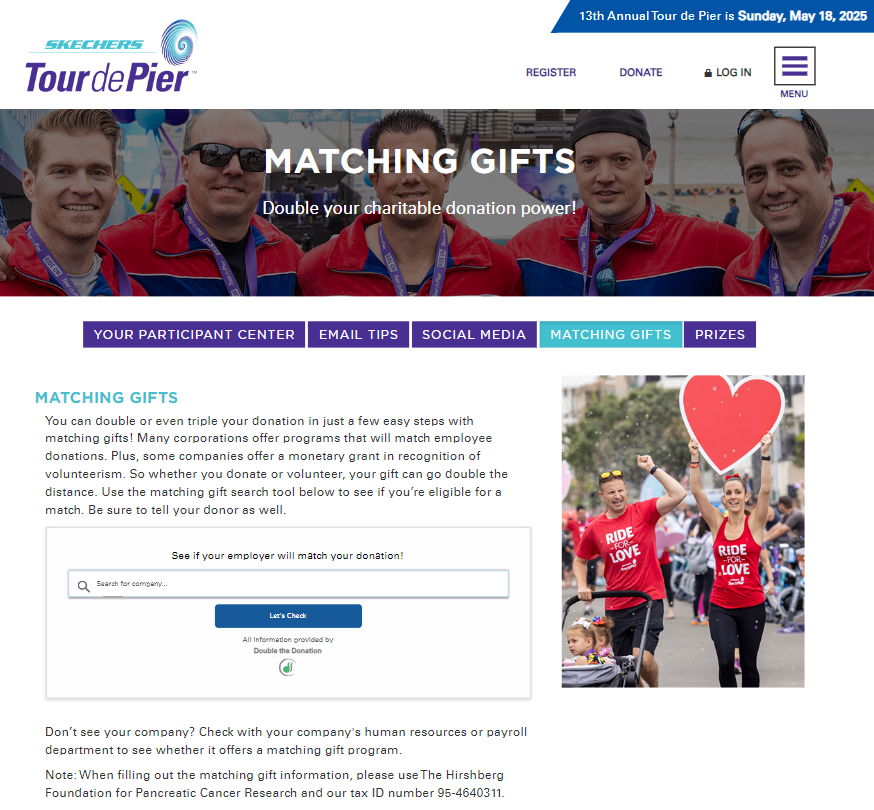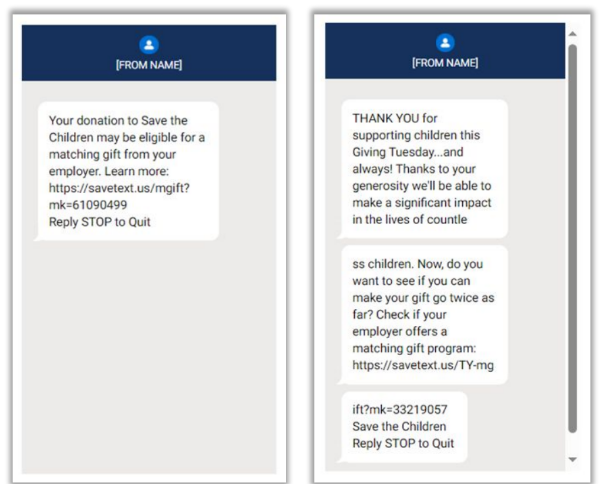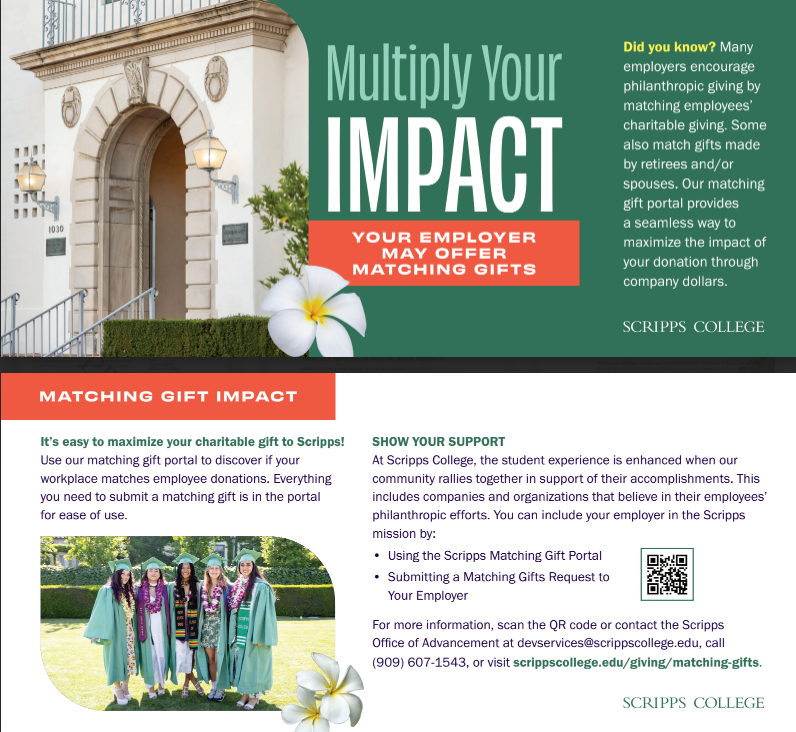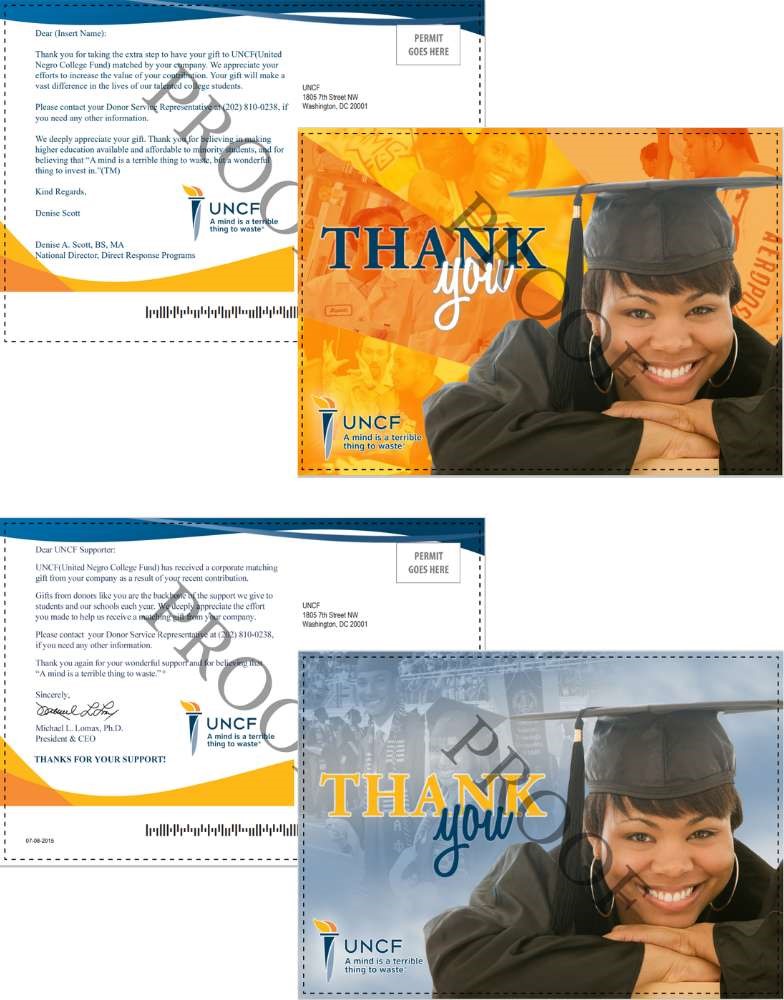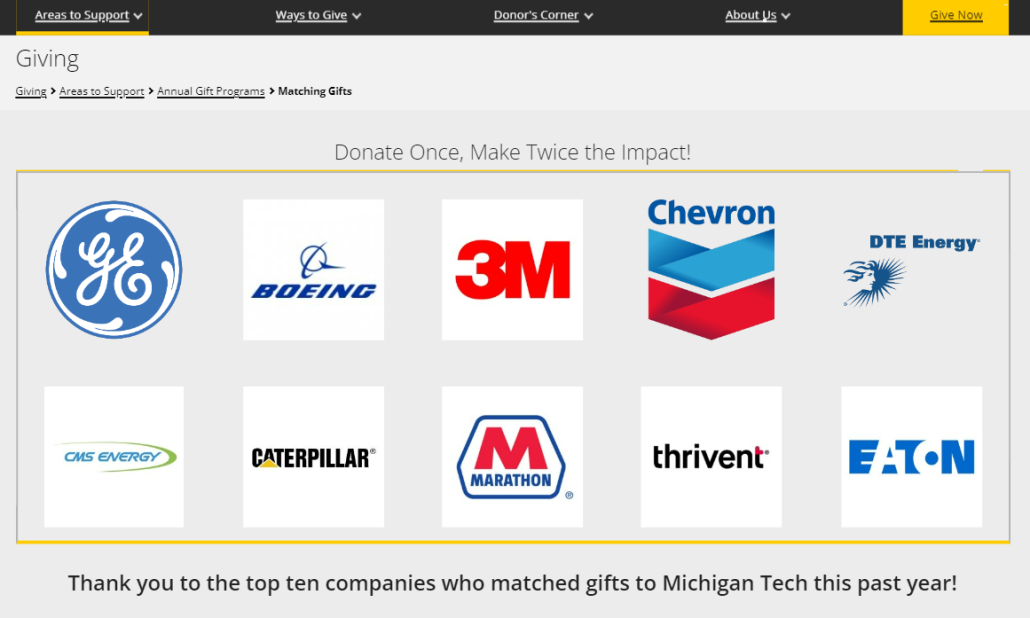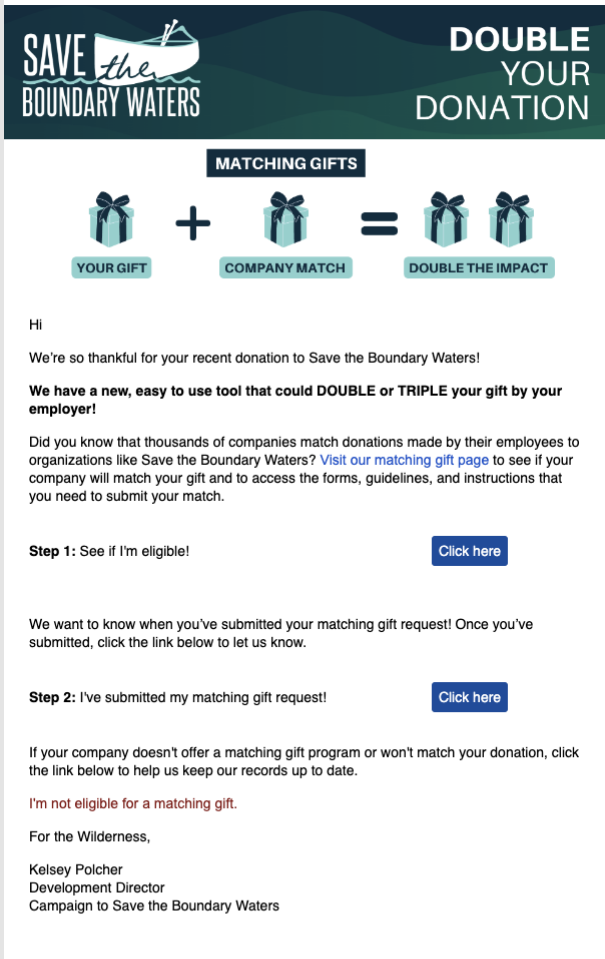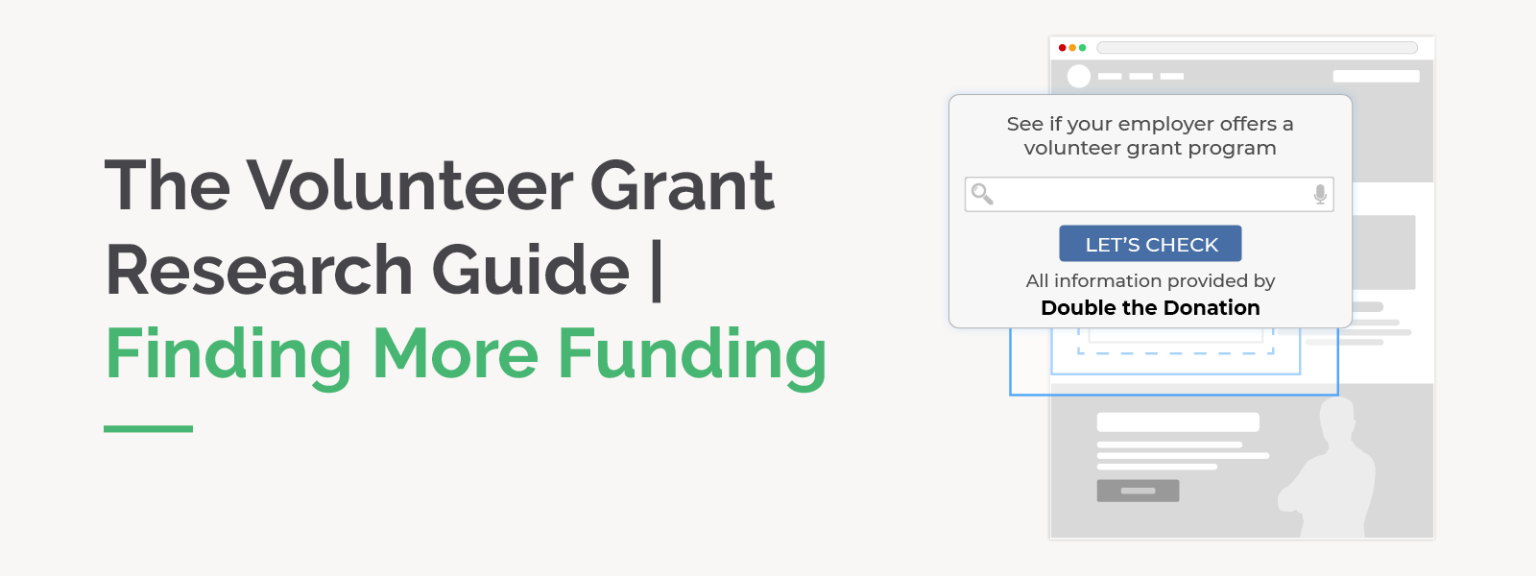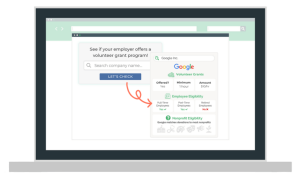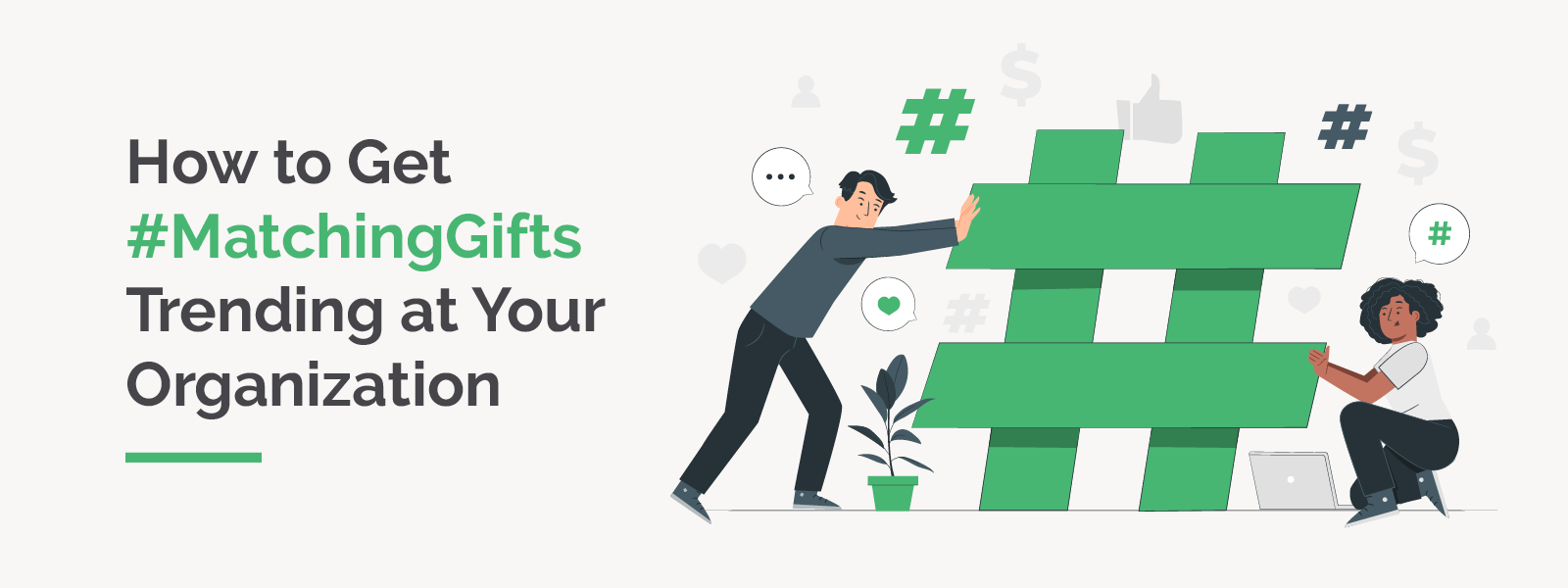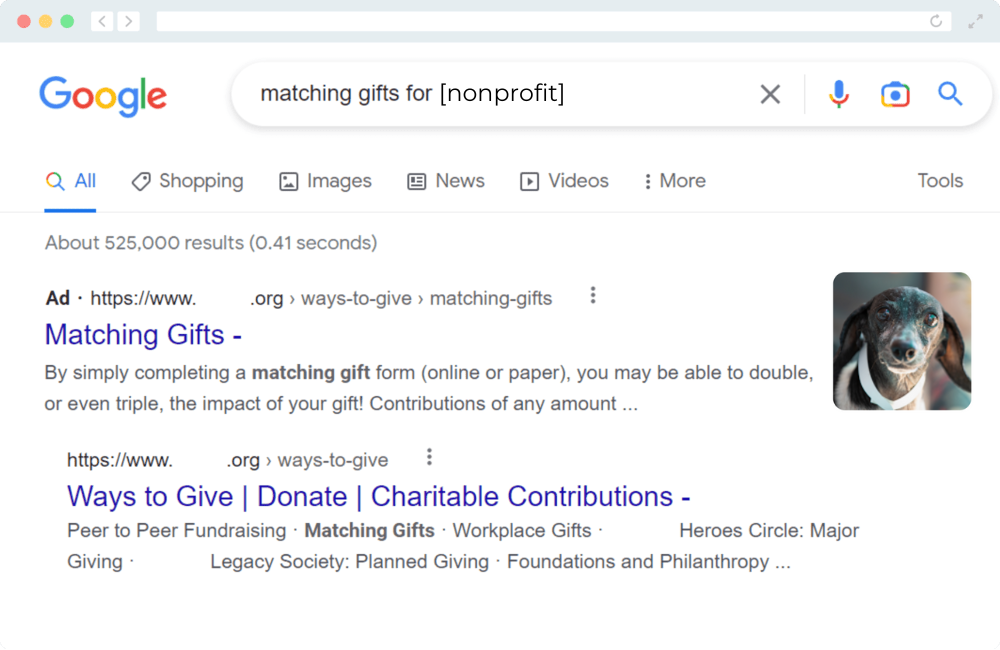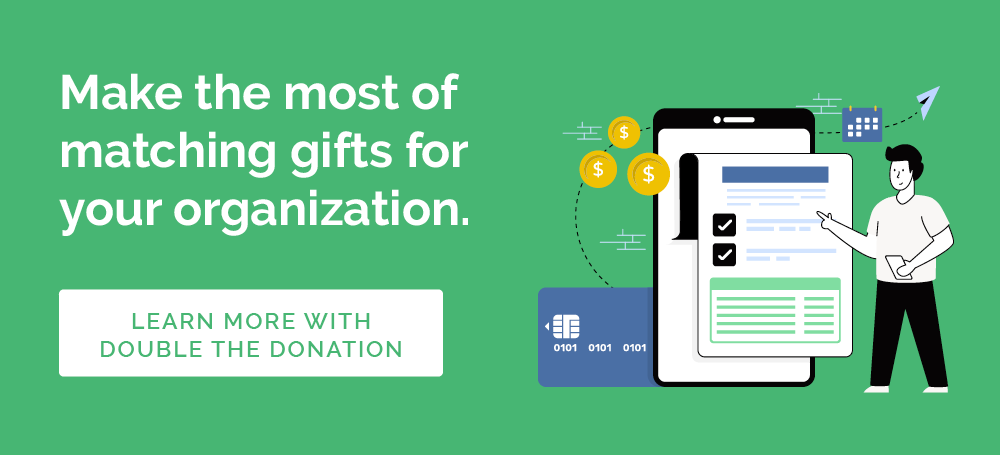How to Hire A Google Grants Agency + 8 Best Firms for 2024
The Google Ad Grants program empowers nonprofits to connect with prospects searching for causes like theirs around the globe. However, maximize the program’s potential requires a strategic approach.
Google Grants agencies specialize in helping nonprofits fully leverage the program. They handle everything from applying for the program to picking the best keywords, removing the learning curve so you can focus on your mission and engage new constituents.
Whether you’re new to Google Ad Grants or looking to refresh your account management strategies, a Google Ad Grants manager can elevate your ad campaigns and keep your account compliant with Google’s rules. In this guide, we’ll cover the program basics and recommend top Google Grants agencies to help you make the most of your $10,000 monthly grant. Here’s what we’ll cover:
- An Overview of Google Ad Grants Management
- How A Google Grants Agency Can Help Your Nonprofit
- How To Choose A Google Ad Grants Manager
- 8 Recommended Google Grants Agencies
At Double the Donation, we’ve witnessed organizations achieve remarkable results with corporate giving programs like Google’s. While we focus on employee giving programs like matching gifts, we believe Google Ad Grants can also significantly enhance your organization’s impact. Let’s explore how specialized agencies can streamline this process.
An Overview of Google Ad Grants Management
Before researching specific Google Grants agencies, make sure you know what Google is offering eligible nonprofits through the program. This will help you understand whether outsourcing the work to a professional is the right move. If you’re already well-versed in Google Ad Grants, feel free to jump ahead to learn how an agency fits into your strategies.
What is the Google Ad Grant?
The Google Ad Grants program is a corporate giving initiative that gives 501(c)(3) organizations $10,000 every month to spend on amplifying their pages in Google search results. That adds up to $120,000 every year that qualifying nonprofits can invest into marketing their missions.
Nonprofits pick the landing pages they’d like to promote, then build ad campaigns that target different keywords related to their mission. The goal of the program is to help nonprofits scale their impact by getting in touch with more donors, volunteers, and advocates online.
So long as your nonprofit complies with the program’s guidelines, the grant will automatically renew each month. The program has pretty strict guidelines for eligibility and ongoing compliance. That’s why organizations typically outsource account management to Google Ad Grant marketing agencies who will oversee their campaigns and keep their accounts compliant.
Are Google Ad Grants worth it?
Since 2001, Google has awarded over $10 billion in free advertising to 115,000+ nonprofits in 51 countries, according to recent nonprofit marketing statistics. Your nonprofit can easily become part of this amazing program!
While it can be challenging to create winning ad campaigns, any organization can (and should) apply for the program. It’s $10,000 of free funding every month that can amplify your cause if you allocate it strategically. With proper Google Ad Grants management, the program empowers your nonprofit to:
- Increase online conversions such as event signups, donations, and volunteer registrations
- Connect with lifelong supporters who are motivated by your cause
- Bid on competitors’ keywords so your ads can show up alongside their listings
- Build brand awareness and spread awareness for mission-centric operations like matching gifts
- Establish authority in your field and become a trusted resource for your mission
To make the most of the program, have someone at your organization spend a few hours each week learning about Google Ad Grants management. If you face limited staff bandwidth and can’t invest enough time into your campaigns, outsource the work to a dedicated Google Ad Grants manager.
Either way, $10,000 a month is a good chunk of change that will pale in comparison to the amount of staff time you spend or the money you pay an expert to manage your campaigns.
Why should I invest in Google Ad Grants management?
This Google Ad Grants impact report shows that nonprofits can see incredible returns with proper Google Ad Grants management. In fact, search ads offer the highest ROI among paid advertising platforms for nonprofits.
Google processes 3.5 billion search queries daily and accounts for over 90% of the search engine market, making it the world’s most popular search engine. Advertising your cause on Google connects you with a vast audience, and effective grant management ensures you deliver the right content to the right individuals.
However, getting started comes with a steep learning curve, from conducting keyword research to maintaining compliance with Google’s standards. With your team’s busy schedule, dedicating enough time to manage your Google Ad Grant may be challenging.
Investing in professional Google Ad Grants management offers several benefits:
- Fast setup: Apply for the program and launch your campaigns quickly with expert guidance.
- Compelling ads: Experts can create ads that resonate with your target audience and drive engagement.
- Easy navigation of the program’s complexities: Expert management helps you overcome the learning curve of keyword research, bidding procedures, and compliance rules.
- Results monitoring and optimization: Professionals can analyze your performance data and make necessary adjustments to maximize your impact.
Especially when working with a Google-certified agency, you’ll gain access to the best advice and a direct line to Google for any account issues.
How A Google Grants Agency Can Help Your Nonprofit
From determining your eligibility to finding the right keywords, a lot goes into effective Google Ad Grants management. That’s where a dedicated Google Grants agency comes into play.
Agencies will take the guesswork out of account management and develop winning campaigns that supercharge your marketing efforts. They spend their time understanding the program’s requirements and learning how to leverage relevant tools that will maximize their clients’ results. Specifically, they help nonprofits with the following:
- Google Grant applications. If you haven’t applied for the program, an agency will help you do so by creating your Google For Nonprofits account, getting verified by Percent, ensuring your website has promotable content, and guiding you through your application.
- Keyword research. A Google Grants agency will develop ad campaigns that target the right keywords. They’ll research keywords associated with your cause and pinpoint the ones that qualified prospects are searching for online.
- Campaign management. A healthy account will have anywhere from 3-5 active campaigns. An agency will actively track these campaigns, report on performance, and make adjustments to your online content to maximize results. Through Google Analytics and Google Tag Manager, they can create live dashboards and reports that keep you looped into your campaigns’ performance.
- Monthly compliance. The program’s guidelines are extensive, and by not complying, your account might be deactivated. Your Google Grants agency will make sure you’re always complying with the program’s guidelines. Some of these include maintaining a 5% clickthrough rate, avoiding single-word or generic keywords, and responding to the annual program survey. When you hire a Google-certified agency, you’ll have access to the program’s latest guidelines, even if they haven’t been formally announced.
- Landing page tips. Your grant money will go to waste if the pages you’re promoting don’t inspire users to convert. Some agencies provide advice for improving your landing pages to help boost traffic and conversions.
- Reactivation if needed. Ideally, your Google Grants agency will keep your account in good standing. However, things happen, especially considering the program has pretty strict guidelines. If your account ever gets suspended, your agency will help reactivate it. Better yet, an agency certified by Google will give you direct access to the Google Grants team, making it easier to resolve any issues.
A Google Grants agency knows what it takes to create winning campaigns that inspire users to click through to your website. And like we mentioned, the money you spend on hiring a professional will be well worth it compared to the $10,000 in marketing money you’ll receive every month.
If you’re curious about any of these services, Getting Attention’s Google Grant agency guide explores how agencies help nonprofits in-depth. That way, you can understand if investing in an agency is the right move.
What Is A Google Partner?
Any marketing agency can offer Google Grants management services. While some promising startup agencies can provide sufficient services, nonprofits can ensure they’re hiring a reliable agency by choosing a certified Google Partner.
A Google Partner is an organization that has earned a certification from Google for demonstrating expertise in managing Google Ads accounts. To become a Google Partner, a company must meet specific requirements set by Google, including:
- Proficiency in Google Ads: The company must have employees who are certified in Google Ads, demonstrating their knowledge of successful management of Google Ads campaigns.
- Performance Requirements: The company must maintain strong ad performance across their managed accounts, showing that they can effectively drive results for their clients.
- Client Spend: The company must meet a certain level of ad spend across their managed accounts, which shows their experience in handling a significant volume of advertising campaigns.
Being a Google Partner provides a company with access to special benefits, including training and support from Google, early access to new features, and the ability to display the Google Partner badge on their website and marketing materials.
This designation is a mark of trust and expertise, indicating that the company is recognized by Google as capable of effectively managing Google Ads campaigns and maximizing the return on investment for their clients.
How To Choose A Google Ad Grants Manager
At this point, you’re almost ready to explore different agencies. As you explore your options, you should take certain steps to make sure you find a Google Grants agency that you can fully depend on to make the most of this CSR opportunity.
For instance, you’ll want to:
- Find Google Ad Grants managers that meet your criteria. Many nonprofits look specifically for partners who are certified by Google. That’s because these professional Google Grants agencies have been vetted by the Google Grants team. When exploring these agencies, look for partners that offer services for the specific areas you need help with. For instance, for full transparency into your campaigns’ performance, double-check that your Google Ad Grant agency will provide comprehensive reports to your team. If you’re seeking help because your account’s been deactivated, prioritize agencies that offer account reactivation services.
- Explore their website and offerings. An agency’s website will help you understand their approach and specializations. Read through their offerings thoroughly Oftentimes, an established agency might also include testimonials or case studies that display successful client results.
- Reach out to learn more about their approach to Google Ad Grant management. Before choosing an agency, contact them to make sure they’re a good fit. This gives you the opportunity to ask lingering questions and see if their team will mesh well with yours. Many agencies start with a complimentary audit of your account to give you an idea of what working with them will look like.
By walking through these steps, you’ll narrow down your options in no time. Remember, the right Google Ad Grant marketing agency will act as an extension of your team and do everything it can to champion your cause. We recommend choosing a Google Partner since these agencies demonstrate a clear understanding of the program.
Whoever you choose, spending time finding a good fit will pay off in the long run as you’ll be able to fully rely on them to make the most of your grant money.
8 Recommended Google Grants Agencies
To simplify the extensive vetting process, we’ve compiled a list of recommendations, so you can find ones that might be a good fit for your team. Each of these partners works with nonprofits to enhance their Google Ad Grants management and displays knowledge of the program’s requirements and opportunities. Use this list to narrow down your options and request their support when you’re ready.
Getting Attention | Best All-Around Agency
Getting Attention specializes solely in Google Ad Grants management. They’re committed to maximizing your grant money, keeping your account compliant, and connecting you with lifelong prospects through powerful marketing campaigns. Backed by a team of seasoned professionals, they’ll act as an extension of your team and work with you to drive results. By managing every aspect of your Google Ad campaigns, they’ll help get your cause in front of qualified prospects who want to make an impact on your cause.
This agency is also a certified Google Partner, meaning the Google Ads team has personally reviewed their team’s abilities to manage Google Ad accounts properly. Their core services include:
- Google Ad Grant Application. If you haven’t already applied for the program, Getting Attention’s experts can check your eligibility for the program and walk you through every step necessary to get your account reviewed and accepted.
- Strategy and Campaign Management. They’ll choose goal-oriented conversion actions like donations or volunteer sign-ups. Then they’ll do ample keyword research, craft compelling ads, monitor ad performance, and make adjustments as needed. Not to mention, they’ll stay on top of reporting and pinpoint the most useful opportunities for your team.
- Ongoing Compliance. Proper Google Ad Grants management means staying on top of the latest rules. As Google Partners, Getting Attention is one of the first ones to hear about compliance rule updates, so you can keep your account in good standing.
- Account Reactivation. If your account is currently lapsed or ever gets suspended, they’ll get everything up to code, so you can continue amplifying your mission.
Getting Started With This Google Grants Agency
Getting Attention strives to be fully transparent with its clients, which is why they don’t charge any upfront fees and instead only charge a monthly fee of $600. Compared to the $10,000 in grant money they’ll secure for you, that’s a small price to pay for expert Google Ad Grants management, especially from a certified Google Partner!
If you require additional services beyond what’s included in their pricing package, they’re open to discussing their experience with you to find a plan that will work. Reach out to discuss your needs with their team today.
Nonprofits Source | Best Agency for Educational Resources
If you’re new to the Google Ad Grant program, the most vital thing you need in this stage is information, and that’s where Nonprofits Source steps in. This digital marketing agency empowers nonprofits to grow their digital footprints, and where it really stands out is its expansive educational library.
Know that they only offer general digital marketing services to nonprofits, though. These services include search engine optimization and web design, which are both essential for improving your Google Search presence. While they don’t manage Ad Grant accounts, they offer plenty of free resources about the program, such as:
- An Ultimate Google Ad Grant Guide: Become a whiz on the program by learning the basics and how to use the Google Grant to launch your organization toward its digital marketing goals.
- How to Apply for Google Grants: This guide walks through the key steps your nonprofit needs to take to acquire the Google Grant. It even shares pro tips for improving your website to drive more conversions with your ads.
- Tips for Hiring A Google Grants Manager: If you still have questions about working with Google Grants agencies, this guide can answer your questions and give you additional recommendations for trusted agencies.
Exploring This Agency’s Resources
Check out Nonprofits Source’s blog for the latest tips in the nonprofit digital marketing world. In no time, you’ll be an expert! You can also partner with them for your SEO and website design needs.
DNL OmniMedia | Best Consultant for Nonprofit Technology
DNL OmniMedia is a nonprofit technology consultant. Their mission is to help your nonprofit leverage technology in ways that amplify your cause and focus on goals rather than getting bogged down with code and data. While they don’t specialize solely in Google Grants, they do offer services that will help enhance your Google Ad Grants management.
Their pay-per-click (PPC) marketing services include:
- Google Grant strategy. DNL OmniMedia can make sure that your Google Ad Grant strategy aligns with other aspects of your nonprofit’s strategy. They’ll help you create a keyword strategy that makes sense for your cause and connects you with the right prospects.
- Ad copy development. Their digital marketing experts will write and test ads that are designed for optimum impressions and clicks. That way, you can inspire readers to click through to your site.
- Website development. Backed by a team of skilled developers, DNL OmniMedia will help you create your website and amplify your online presence. That way, you can create valuable landing pages for your Google Ad Grant campaigns that drive users to get involved.
- Reporting. With Google Analytics and Google Tag Manager, DNL OmniMedia will report on campaign performance and interpret the data for your team. This will help improve your site and campaign’s content.
Getting Started With This Google Grants Agency
DNL OmniMedia makes it easy to learn about their services and contact their team by filling out a form on their website. Whether you’re looking to improve your Google Ad landing pages or better understand campaign data, this Google Grants agency is a reliable choice!
Allegiance Group | Best Agency for General Digital Marketing
Allegiance Group works with nonprofits and associations to transform their digital strategies and grow their impact. Whether you’re focused on fundraising, advocacy, stewardship, or content marketing, they’ll tailor your digital marketing plan to do more good for your cause. One of their digital marketing offerings is Google Ad Grants management.
Their advertising-related services include:
- Website content optimization. They’ll evaluate your website’s existing content and create valuable content that you can then amplify through your ad campaigns.
- Holistic advertising plan. They’ll identify the best advertising platforms to reach your fundraising, advocacy, stewardship, or content marketing goals. That means you can get help with Google Ads and social media ads. Then, they’ll test different ad formats and creative elements to attract your target audience.
- Reporting. With web analytics tools like Google Analytics, Allegiance will deliver reports and real-time dashboards that display your marketing performance, like page views, entrances, and goal assists. That way, you can continuously refine your campaigns.
Getting Started With This Google Ad Grants Manager
Allegiance Group empowers you to create a more holistic approach to your nonprofit’s digital marketing. Explore their site to get a sense of whether their offerings align with your Google Ad Grant needs.
RKD Group | Best Agency for Donor Cultivation
RKD Group is a certified Google Grants agency that understand that nonprofits often have trouble making the most of their free advertising money without professional help and aim to eliminate those obstacles for them. They were the first full-service direct-response company to be added to the Ad Grants Certified Professional Community, so you know you’re in good hands if you choose them. From animal welfare groups to veteran organizations, they strive to help all causes succeed by connecting with donors.
Their team of experts will work closely to manage all aspects of your Ad Grants account through services such as:
- Account Activation. Between helping you register for Google for Nonprofits and filling out your application RKD Group will help you secure your free grant money.
- Ad Creation. Their professional Google Ad Grants team will build high-level campaigns with required ad groups and keywords tied to clear goals. Plus, they’ll write strong ads for you.
- Campaign Optimization. Once your campaigns go live, the work doesn’t stop there! Their Google Grants agency will monitor your campaigns’ performance and make adjustments to boost conversions.
Getting Started With This Google Grants Agency
RKD Group makes it easy to amplify your work and take advantage of the opportunities available to your nonprofit. Before lining up a consultation with their team, check out their services to make sure they offer what you need.
TrueSense Marketing | Best Agency for Search Engine Marketing
As a certified professional Google Ad Grant marketing agency, TrueSense Marketing is a smart addition to your marketing efforts. They’re comprised of professionals with extensive search engine marketing (SEM) experience that can take your Google Ad Grants management to the next level. They’ll handle everything from application to ongoing maintenance, so you can focus on other aspects of your mission.
Some of their services include:
- Content Creation. TrueSense can help breathe life into your nonprofit’s stories, so you can connect on a deeper level. They’ll help craft content with compelling offers that motivate donors to give generously. Then, you can amplify that content with Google Ads.
- Hands-On Management. TrueSense Marketing will actively manage your account, edit your campaigns to maximize ad performance, and collaborate closely with your team to highlight the most valuable opportunities for your nonprofit.
- Multichannel Campaigns. With help from this Google Grants agency, you won’t be confined to search ad campaigns. They’ll help you leverage both paid and organic channels to reach a larger community of prospective clients, volunteers, advocates, and other supporters.
Getting Started With This Google Ad Grants Manager
TrueSense Marketing is devoted to helping you make the most of your $10,000 each month. You can explore their full list of services on their website and determine if they’d be a good fit for your nonprofit.
Koios | Best Google Grants Agency for Libraries
Koios is a nonprofit organization specializing in digital marketing for public libraries, library advocacy groups, and other public information advocates. Their main service involves using the Google Ad Grants program to enhance the visibility of libraries online. Koios assists libraries in applying for the program, creating effective advertising strategies, and managing their Google Ads accounts.
They help increase web traffic to library websites and resources, particularly by making library catalogs more discoverable in Google searches. Here’s an overview of this agency’s services:
- Google Ad Grant Application. They’ll help you register with Google for Nonprofits and apply for the Google Grant. If your application is rejected, they’ll make the necessary adjustments to ensure it’s approved.
- Ad Optimization. Koios will create standout ads and monitor your campaigns. They have an incredible 12.8% CTR, which is well above the 5% CTR compliance rule. This helps libraries spread awareness and share the joy of learning.
- Catalog Promotion. Their main offering is promoting each library’s Online Public Access Catalog (OPAC) within Google SERPs, allowing the entire catalog to be searchable and visible online.
Getting Started With This Google Grants Agency
Koios works with libraries of varying sizes and tailors its pricing accordingly, offering a 60-day free trial period for new subscribers.
Reef Digital Agency | Best Google Grants Manager for Australian Nonprofits
Located in Australia, Reef Digital specializes in managing Google Ad Grants among other digital marketing services. They were the first agency in Australia to receive the Google Ad Grants Certified Professional designation, which is a testament to their expertise.
After serving 50+ nonprofits, they know how to unlock the power of the Google Ad Grant. Their featured case studies show that they helped the Australian Cancer Research Foundation reach record-breaking EOFY campaign results via the Google Ad Grant. They also helped Care Careers, which is a job board attract people to work in the disability, community, and aged care sector in Australia. They achieved
Here’s a rundown of Reef’s services:
- Balancing Ad Grants and Paid Ads. They help nonprofits show their grant-funded ads wherever possible and use paid ads to supplement any gaps.
- Google Grant Compliance. They’ll keep a close eye on your performance to keep your account in good standing with Google.
- Supplemental Digital Marketing Services. Reef offers a range of services that can enhance your overall Google Ad performance, including landing page optimization, SEO, and content creation.
Getting Started With This Google Ad Grants Manager
Reef charges based on the complexity of your Google Grants needs. They offer a free Google Ad Grants audit to potential clients.
Additional Google Ad Grant Resources
The Google Ad Grant program offers an immensely valuable marketing opportunity for your team. You can amplify your work and expedite your mission, but only if you choose the right keywords and deliver optimized landing pages to prospects.
A professional Google Grants agency eliminates the guesswork and makes it incredibly easy to get your content in front of the right audiences.
Plus, agencies that are fully devoted to Google Ad Grants management spend their time learning the ins and outs of the program. They fully understand everything from compliance requirements to keyword research best practices. That way, you can rest assured that you’re creating winning campaigns and that your account will stay compliant. In turn, you can keep receiving your free $10,000 grant every month.
As the only agency fully dedicated to Google Ad Grants on our list, we highly recommend you check out Getting Attention. They offer everything you need to get your account activated and create optimized campaigns. Plus, they’re a certified Google Partner, so you know you’re receiving professional guidance.
Looking to learn more about the program? As you start researching different agencies, check out these educational resources:
- Google Ad Grants: The Complete Guide + How to Get Started. Learn all about the program and explore some of the strategies that a Google Grant agency might use to optimize your account by exploring this guide.
- Corporate Philanthropy Examples: Companies Doing It Right. Google is just one of many companies that offers generous charitable programs. Explore some other companies that give back to organizations like yours.
- Google Grants Eligibility: How To Check If You Qualify. Want to determine your eligibility for the program before hiring a Google Grants agency? Check out our eligibility guide.


